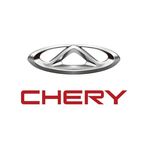Huawei's Smart Mobility Revolution: Bridging Global Tech with Local Needs
March 26, 2025, 5:51 pm
In the heart of Bangkok, a revolution is brewing. The Bangkok International Motor Show has become a stage for innovation, and Huawei's HMS for Car is taking center stage. This year, the spotlight shines on the upgraded MAAN 3.0 architecture, a framework designed to redefine smart mobility in Southeast Asia. With a blend of technology and localized partnerships, Huawei is crafting a new narrative for the automotive industry.
Imagine a world where your car understands you. Where it navigates the bustling streets of Bangkok or the winding roads of Malaysia with ease. This is the vision Huawei is bringing to life. The MAAN 3.0 architecture consists of four key components: MAP BOX, AI BOX, APP BOX, and NET BOX. Each element plays a crucial role in creating a seamless in-vehicle ecosystem.
The MAP BOX is the navigator. It integrates lane-level navigation and smart EV charging planning. No more guessing where to charge your electric vehicle. It knows the best routes and charging stations, easing range anxiety. This is not just a feature; it’s a lifeline for drivers in a region where electric vehicles are gaining traction.
Next, we have the AI BOX. This is the voice of the car. It supports over 15 Southeast Asian languages and dialects. Imagine giving commands in your native tongue, and your car responds perfectly. This feature is a game-changer, making technology accessible to everyone, regardless of language barriers.
The APP BOX is the connector. It accelerates the integration of third-party services. Whether it’s ordering food or booking a ride, this box ensures that your car is not just a vehicle but a hub of convenience. It’s about enhancing the driving experience, making it more enjoyable and efficient.
Finally, the NET BOX is the backbone. It ensures low-latency connectivity for real-time services. Imagine streaming your favorite music or getting emergency assistance without a hitch. This box guarantees that your car stays connected, no matter where the road takes you.
But Huawei’s ambitions extend beyond technology. The company is forging partnerships across Southeast Asia. In Malaysia, collaborations with Astro Radio and Bateriku are set to integrate broadcasting and emergency services into the driving experience. In Thailand, partnerships with GMM Media and Game Square Interactive focus on entertainment and localized content. These alliances are not just strategic; they are essential for creating a holistic ecosystem that meets the diverse needs of drivers.
The automotive landscape is changing. Traditional automakers are no longer the only players. Tech companies like Huawei are stepping in, bringing fresh ideas and innovative solutions. This shift is evident in the partnerships with Chery, Great Wall Motors, and Changan. These collaborations have resulted in customized Petal Maps solutions for popular models like the JAECOO 6 and Haval H6 PHEV. Live demonstrations at the motor show showcased how these vehicles adapt to Thailand’s unique traffic patterns and charging infrastructure.
Huawei’s approach is not just about selling technology; it’s about building a community. The company’s "Tech + Ecosystem" strategy aims to empower over 30 automakers worldwide by 2025. This dual-engine strategy combines global research and development with hyper-local adaptations. It’s a recipe for success in a region as diverse as Southeast Asia.
The Bangkok International Motor Show is more than an exhibition; it’s a glimpse into the future. Visitors can interact with the technology firsthand. The interactive zone allows attendees to test the localized routing and multilingual commands of Petal Maps in real-time. This hands-on experience is crucial for understanding how these innovations will impact daily life.
As the automotive industry evolves, so do consumer expectations. Drivers are no longer satisfied with basic features. They demand smart, integrated solutions that enhance their driving experience. Huawei is listening. By focusing on localized innovations, the company is addressing the specific needs of Southeast Asian drivers. This approach not only builds trust but also fosters loyalty.
The road ahead is promising. With the integration of advanced technologies and strategic partnerships, Huawei is positioning itself as a leader in smart mobility. The company is not just a tech giant; it’s a pioneer in creating a smarter, safer driving experience.
In conclusion, Huawei’s presence at the Bangkok International Motor Show marks a significant milestone in the evolution of smart mobility. The MAAN 3.0 architecture is a testament to the power of innovation and collaboration. As the automotive landscape continues to shift, Huawei is at the forefront, driving change and shaping the future of transportation in Southeast Asia. The journey has just begun, and the possibilities are endless.
Imagine a world where your car understands you. Where it navigates the bustling streets of Bangkok or the winding roads of Malaysia with ease. This is the vision Huawei is bringing to life. The MAAN 3.0 architecture consists of four key components: MAP BOX, AI BOX, APP BOX, and NET BOX. Each element plays a crucial role in creating a seamless in-vehicle ecosystem.
The MAP BOX is the navigator. It integrates lane-level navigation and smart EV charging planning. No more guessing where to charge your electric vehicle. It knows the best routes and charging stations, easing range anxiety. This is not just a feature; it’s a lifeline for drivers in a region where electric vehicles are gaining traction.
Next, we have the AI BOX. This is the voice of the car. It supports over 15 Southeast Asian languages and dialects. Imagine giving commands in your native tongue, and your car responds perfectly. This feature is a game-changer, making technology accessible to everyone, regardless of language barriers.
The APP BOX is the connector. It accelerates the integration of third-party services. Whether it’s ordering food or booking a ride, this box ensures that your car is not just a vehicle but a hub of convenience. It’s about enhancing the driving experience, making it more enjoyable and efficient.
Finally, the NET BOX is the backbone. It ensures low-latency connectivity for real-time services. Imagine streaming your favorite music or getting emergency assistance without a hitch. This box guarantees that your car stays connected, no matter where the road takes you.
But Huawei’s ambitions extend beyond technology. The company is forging partnerships across Southeast Asia. In Malaysia, collaborations with Astro Radio and Bateriku are set to integrate broadcasting and emergency services into the driving experience. In Thailand, partnerships with GMM Media and Game Square Interactive focus on entertainment and localized content. These alliances are not just strategic; they are essential for creating a holistic ecosystem that meets the diverse needs of drivers.
The automotive landscape is changing. Traditional automakers are no longer the only players. Tech companies like Huawei are stepping in, bringing fresh ideas and innovative solutions. This shift is evident in the partnerships with Chery, Great Wall Motors, and Changan. These collaborations have resulted in customized Petal Maps solutions for popular models like the JAECOO 6 and Haval H6 PHEV. Live demonstrations at the motor show showcased how these vehicles adapt to Thailand’s unique traffic patterns and charging infrastructure.
Huawei’s approach is not just about selling technology; it’s about building a community. The company’s "Tech + Ecosystem" strategy aims to empower over 30 automakers worldwide by 2025. This dual-engine strategy combines global research and development with hyper-local adaptations. It’s a recipe for success in a region as diverse as Southeast Asia.
The Bangkok International Motor Show is more than an exhibition; it’s a glimpse into the future. Visitors can interact with the technology firsthand. The interactive zone allows attendees to test the localized routing and multilingual commands of Petal Maps in real-time. This hands-on experience is crucial for understanding how these innovations will impact daily life.
As the automotive industry evolves, so do consumer expectations. Drivers are no longer satisfied with basic features. They demand smart, integrated solutions that enhance their driving experience. Huawei is listening. By focusing on localized innovations, the company is addressing the specific needs of Southeast Asian drivers. This approach not only builds trust but also fosters loyalty.
The road ahead is promising. With the integration of advanced technologies and strategic partnerships, Huawei is positioning itself as a leader in smart mobility. The company is not just a tech giant; it’s a pioneer in creating a smarter, safer driving experience.
In conclusion, Huawei’s presence at the Bangkok International Motor Show marks a significant milestone in the evolution of smart mobility. The MAAN 3.0 architecture is a testament to the power of innovation and collaboration. As the automotive landscape continues to shift, Huawei is at the forefront, driving change and shaping the future of transportation in Southeast Asia. The journey has just begun, and the possibilities are endless.



